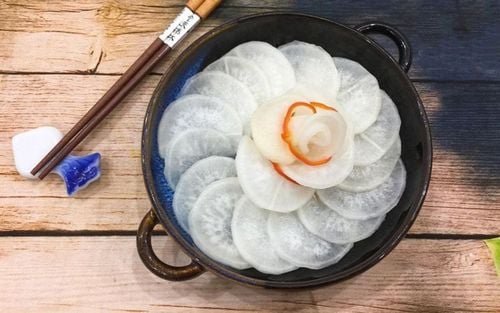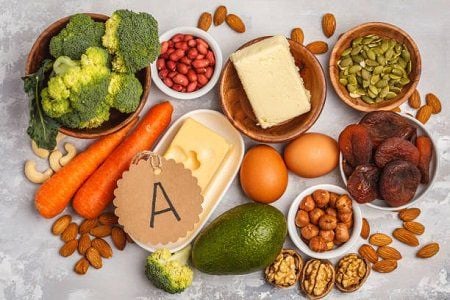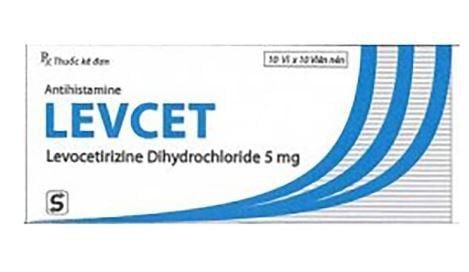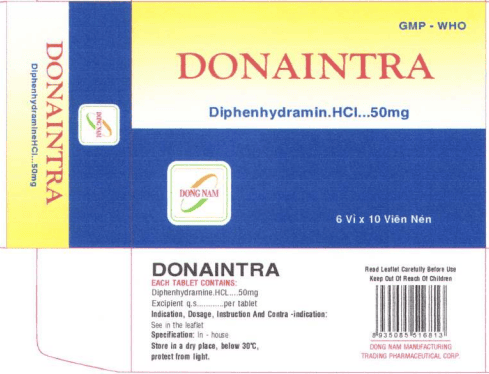This is an automatically translated article.
Every parent wants their child to grow up on a healthy diet - and it's hard to think of a healthier food than vegetables to add to a child's meal. Because vegetables, full of complex carbs, fiber, vitamins, minerals and antioxidants... But you always ask the question: Can you really get kids to enjoy eating vegetables? This article will help you choose vegetables that your kids love.
1. The best vegetables for kids
For babies just starting to enter the complementary feeding period (about 6 months or so), what vegetables are good for the baby to eat. You can try to apply with the following vegetables:
Carrots
Good vegetables for babies to eat weaning. Carrots, a staple food for children. After the carrots are cooked, the carrots will be pureed to create a beautiful mixture and have a taste that is not too harsh for the sensitive palate of children. In addition, the composition of carrots is high in fiber to promote healthy digestion, as well as beta carotene, which converts into vitamin A to strengthen vision and immune function of the body.
Spinach
Good vegetables for babies . In addition to a diverse nutritional composition, the leaves of spinach are rich in iron - a nutrient that babies especially need for energy and growth.
Cooked, pureed spinach best for young children. You can add a little salt to enhance the taste.
Pumpkin
Pumpkins may remind you of cold weather and falling leaves, but with the canned variety, kids can enjoy gourds any time of the year. The smooth texture of pumpkin puree is considered one of the ideal first foods for babies, and it is rich in vitamin A.
Avocado
Avocado contains a very special monounsaturated fatty acid composition. The important macronutrients found in avocados can help develop your baby's brain and nervous system, as well as enhance absorption of fat-soluble vitamins vitamin A, vitamin D, and vitamins. E and vitamin K. What's more, a serving of avocados often contains high levels of fiber and folate.
Sweet potatoes
Mashed sweet potatoes after cooking are not only easy for your child to eat, but they are also packed with nutrients. Similar to carrots and squash, sweet potatoes are packed with vitamin A that supports the immune system and vision, along with plenty of fiber, manganese, vitamin B6 and vitamin C.
Peas
Soft peas may not It's a favorite food choice for adults, but peas can be seen as a great choice for children. These little green balls are among the highest in protein, with 4 grams per serving.
Prepare peas simply steam frozen peas and mix until puree. You can even add a bit of breast milk to give the pea mixture a thicker consistency.

Đậu Hà Lan là loại rau tốt cho trẻ sơ sinh
Broccoli
With its anti-cancer compounds and rich micronutrients, broccoli is known as an extremely healthy vegetable for people of all ages.
Give your baby this cruciferous superfood by offering her own steamed or grilled broccoli, or adding broccoli to pasta dishes, baked potatoes with cheese or can use potato soup let cool to room temperature.
Zucchini
As the summer months come, take advantage of a good zucchini crop by feeding your baby some. Summer-harvested zucchini and yellow squash provide a mild flavor and nutrients like: Manganese, potassium and vitamin A.
Feed your baby with zucchini prepared in its cooked, high-quality form. seeds with tomato sauce or thinly sliced and sautéed with a little olive oil.
Tomato
It may take a while for your child to get used to all kinds of tomato-based foods like pizza and pasta with marinara. Now, you can use fresh tomatoes to make food for your baby.
Abundant water content for hydration plus vitamins C and A increase the value of tomatoes as a healthy first vegetable.
Onions
Due to the pungent taste of onions, you can avoid giving onions to your child. But the aromatic allium compounds found in onions can be seen as a great way to add flavor to a child's diet without the sodium. Try cooking onions in casseroles or mixing with other vegetables.
You can help get your baby started on solids by giving her plenty of opportunities to choose her own favorite vegetables. You can incorporate four of these easy-to-handle, bite-sized veggies in a baby-led weaning (BLW) diet.
Bell peppers
Bell peppers contain more vitamin C than oranges! Vitamin C is quite important and its role not only strengthens the immune system, it acts as an anti-inflammatory antioxidant.
Help improve your child's health by letting them eat their own diced bell peppers. If the taste of chili causes a negative reaction to your child, try pairing it with cheese.
Cucumber
There is nothing as refreshing as a crisp, cool cucumber. The cooling sensation of these vegetables can be especially soothing on a teething baby's gums. To reduce the risk of choking, peel cucumbers and cut them into small pieces as part of a baby-led weaning diet.

Các rau tốt cho trẻ ăn dặm trong đó có dưa leo
2. How to deal with the relationship between children's diets and high-nitrate vegetables
For young children, there are some safety concerns with nitrates - compounds that some vegetables absorb from the soil.
When children consume too many nitrate compounds found in vegetables, it can lead to a condition called methemoglobinemia. Infants who show signs of absorbing too much nitrate may develop a blue coloration on their hands, feet, and mouth, may be tired, and have trouble breathing.
If your baby has any of these symptoms - especially difficulty breathing - take him or her to the doctor right away.
Root vegetables such as beets, carrots and green leafy vegetables (especially spinach) contain relatively high levels of nitrates. But that doesn't mean you shouldn't give your baby these healthy veggies once he's started solids.
Other vegetables to avoid
Stomach carrots. Baby carrots are not a good choice for babies. Their size and hardness make them a choking hazard. Live celery. The long fibers of raw celery can easily cause a blockage in a child's throat. If you choose to give your baby celery, make sure it's cooked well and cut into small pieces. Corn. Creamy corn or corn puree are both fine for babies, but avoid giving them small, chewy grains.
3. When to Talk to a Pediatrician
With all the food groups, it can be difficult to introduce your child to the vast and colorful world of vegetables. Although allergies to vegetables can be very rare, and no vegetable is among the top eight food allergens, there is always a chance that a child will be allergic to any food.
If your child has symptoms such as: Vomiting, diarrhea, wheezing, hives or a rash after eating a particular vegetable, talk to your pediatrician about possible allergies or children's sensitivities to food.
Contrary to stereotype, getting your kids to eat their veggies doesn't have to be like an epic battle of wills. By introducing your child to a wide selection of vegetables and products from an early age, you are giving your child the best chance to develop his or her favorite tastes.
Even if your kids don't like spinach or turnips, which vegetables can you give them? The more foods you expose your child to, the more likely he is to accept (and even enjoy) the food.
If you have a need for consultation and examination at Vinmec Hospitals under the national health system, please book an appointment on the website (vinmec.com) for service.
Please dial HOTLINE for more information or register for an appointment HERE. Download MyVinmec app to make appointments faster and to manage your bookings easily.
Reference source: healthline.com












